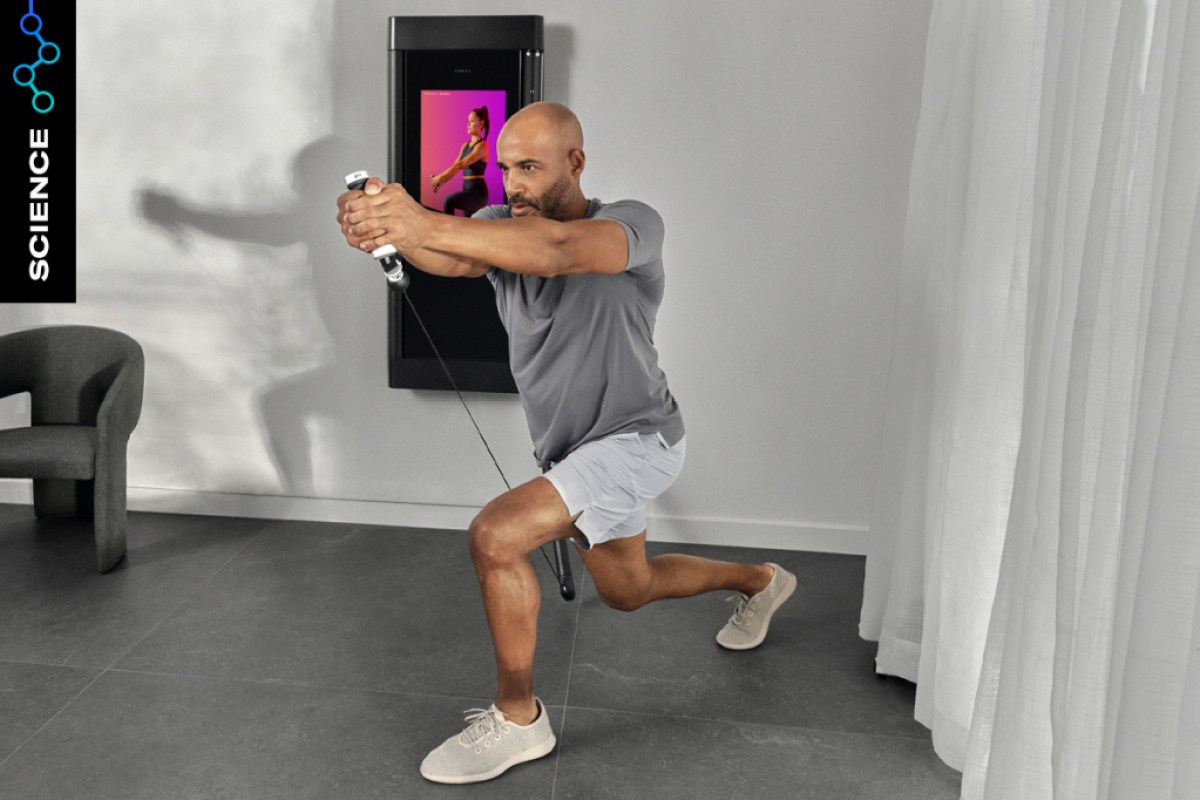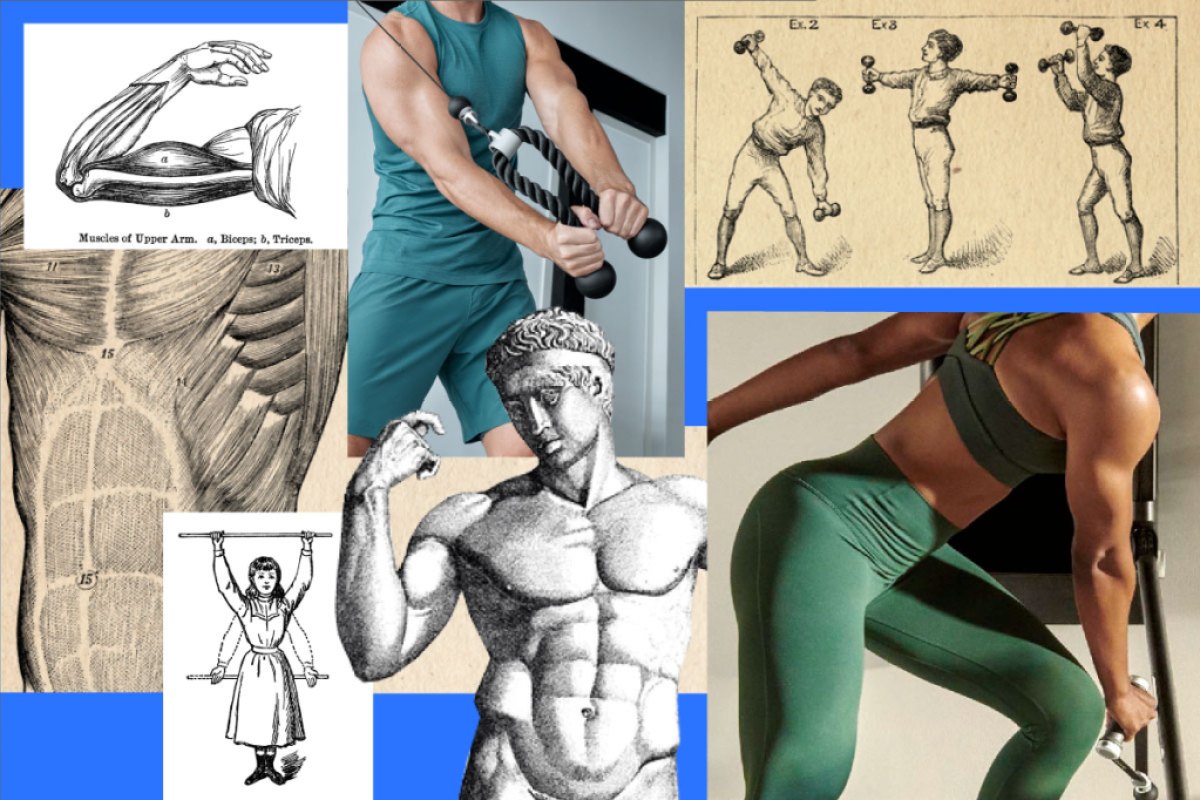Don’t let misinformation cause you to miss out on the boundless benefits of lifting.

With so many unfounded myths out there about women’s fitness, it can be easy to end up misinformed and miss out on the benefits of strength training. But relying on trustworthy sources and research can clear up confusion surrounding strength training for women and lead you back to the truth.
That’s why Tonal partnered with female physiology expert and Tonal Advisory Board member Stacy Sims, PhD, to dispel the top myths about strength training for women with science-backed research. Sims has dedicated her career to researching the female response to strength training and helping women better understand their bodies in the process, so you can learn how to harness your unique physiology to get stronger.
First, The Facts on Female Strength
Women have a different physiological makeup than men, thus their training should be customized to support it. While in general, men may have more absolute strength than women (by up to 157 percent in upper-body strength and 60 percent in lower-body strength in tests like the one-rep max), research shows that women can have more relative strength, a measurement of the weight you lift compared to your body size. In other words, if you can lift more weight at a lower body weight, you have more relative strength. And your training style can make an impact. “Females who combine strength and power training may make greater relative improvements compared to males,” says Sims.
Strength and muscle mass are also directly related to the type and function of muscle cells, and women generally have a greater proportion of type I muscle fibers (endurance) than type II muscle fibers (force and power). Your type I muscle fibers are more resistant to fatigue, and female athletes who train at the same relative workload (an equal volume and intensity) as males need less recovery time between sets and after 24 hours. So you can get through your workouts faster and more efficiently, maybe tack on a few more sets, and even bounce back quicker the next day when compared to men.
While women and men have different physiology, women have their own unique set of strengths. Make sure you don’t let these myths surrounding female strength training keep you from being your strongest. Here’s how.
1. MYTH: Women shouldn’t lift heavy because they’ll get “bulky.”
Once and for all, women will not get “bulky” if they lift heavy weights. Period. And you can thank your hormones for that. Here’s how this works: Research shows that strength and muscle mass depend on anabolic (muscle-building) hormones such as testosterone, growth hormone, and insulin-like growth factor I (IGF-I). While women produce some testosterone, they don’t produce anywhere near as much as men do.
Women do, however, produce more estrogen and progesterone, hormones that affect the muscle-building hormones. While estrogen may boost muscle strength sometimes, it mostly blunts the muscle-building hormone IGF-I, and progesterone breaks down muscle tissue, making it harder to maintain in the long run.
This all means you have many physiological factors working against the muscle-building process, so you can and should lift heavy without the fear of “bulking up.” (For the record, there’s nothing wrong with “bulking,” it just requires strategic training and nutrition plans that are much more complex than simply lifting heavier weights.)
Considering how much is occurring on the inside, women should embrace the ways their bodies persevere to make muscle. Interestingly, female athletes release more growth hormone than men during pre-menopausal years and when growth hormone starts to decrease with age, strength training becomes even more essential. “When women are in late peri-menopause and early post-menopause, high-intensity, heavy strength training can give that boost of growth hormone and increase our anabolic signaling,” adds Sims.

Apply it: Ditch those mini one- and two-pound weights and start moving heavier loads. Lifting heavy can be intimidating, especially when you’re first starting out, but Tonal allows you to do it in the comfort of your own home. It includes safety features like Spotter Mode, which steps in when you’re struggling to help you complete the rep safely. You can release the weight with a click of a button and keep an eye on real-time power output data during workouts, which can help you crank up the intensity to stimulate muscle adaptations.
2. MYTH: You have to have big muscles to be strong.
The circumference of your biceps isn’t always what matters; strength can actually come from more efficient muscular contractions, too. Just like you adapt to various circumstances in your everyday life, your unique body has an incredible ability to adapt to the challenges it faces. As female hormones often blunt muscle mass growth, estrogen works overtime to find a new way to build strength through strong and efficient muscle contractions.
When estrogen is low within your monthly cycle (or in later years), we lose a signal for myosin, one of the muscle fibers essential for muscle contraction, notes Sims. But high-intensity exercise like lifting heavy weight, stimulates myosin to create a strong contraction, regardless of the actual size of your muscle.
Apply it: To boost muscle-building pathways, turn to high-intensity exercise. Tonal’s programs geared toward “Building Muscle” seamlessly add this type of intensity (or progressive overload) into the workouts. The digital weight you lift automatically increases over time to ensure you’re lifting enough weight to maintain muscle. And with Spotter mode, Tonal provides a safe and effective way to push yourself without fear of injury. Check out other workout ideas women love here.
3. MYTH: You have to follow a very strict, limited diet to attain your goals.
Carbs are not the enemy. Fats aren’t “bad.” You don’t need to exist solely on salad. When it comes to diet, it’s helpful to understand how to adjust your fuel to support your workouts and use each macronutrient to your advantage rather than taking a strict approach. Increasing protein intake overall and tailoring carbohydrate intake to your physiological needs is a reliable way to leverage hormonal changes that affect performance in women.
“Estrogen and progesterone are both responsible for blood sugar control and how much gets stored in the liver and muscles,” explains Sims. This is particularly important during the menstrual cycle. “When estrogen and progesterone fluctuate up leading up to your period, women have a difficult time accessing carbohydrates from the liver and the muscle,” she says, and they may end up breaking down muscle for energy.
You can buffer this process by upping protein intake in the days leading up to your period (and post-menopause) and matching your carbohydrate intake to your needs to continue performing your best.
Apply it: Sims recommends increasing your protein intake so when progesterone levels are high, you don’t dip into muscle for energy.
- In reproductive years (20 to 40 years old), Sims suggests 1.8 grams of protein per kilogram of body weight, spread out in 30-gram doses throughout the day, with a two-to-one ratio of carbohydrates to protein.
- For example, lunch might be a grilled chicken sandwich with 30 grams of protein coming from the chicken and 60 grams of carbohydrates coming from two pieces of whole wheat bread.
- For women in peri-menopause (40 to 50 years old) or post-menopause (50 years old and above) when hormonal levels drop off and there is less stimulus to build muscle, Sims recommends anywhere between 2.0 to 2.3 grams of protein per kilogram of body weight, spread out in 40-gram doses throughout the day. She also recommends a one-to-one ratio of carbohydrates to protein because your ability to use carbohydrates for energy is diminished.
- For example, lunch might be 40 grams of protein coming from a can of tuna plus 40 grams of carbohydrates from a diced sweet potato in a large green salad.


